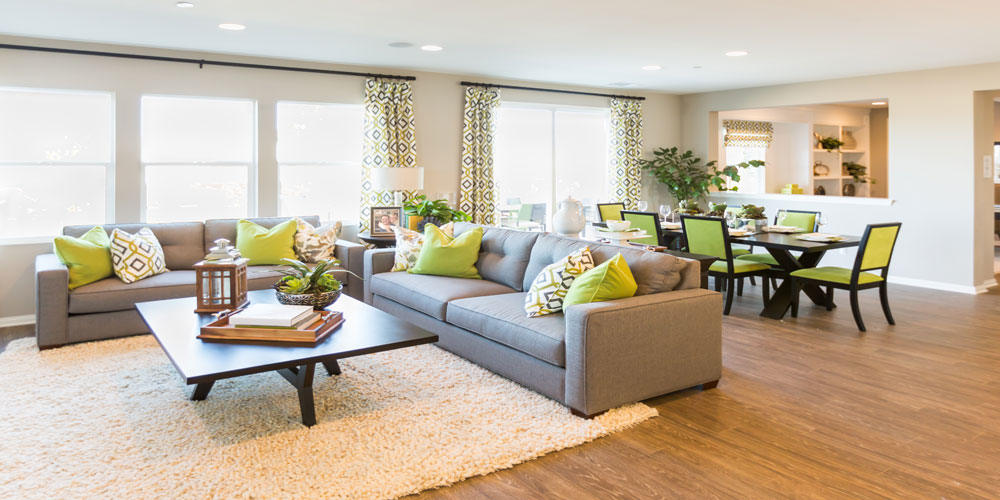Creative Solutions for Compact Living: Stylish & Perfectly British
Compact living doesn’t have to mean compromising on elegance, comfort or functionality. As UK cities grow denser and the cost of living continues to rise, small-space living has evolved from necessity to lifestyle choice. Whether you’re tucked into a chic London flat, a cosy studio in Newcastle, or a converted shepherd’s hut in the Northumberland countryside, clever design can transform even the smallest footprint into a space that’s as inviting as it is efficient.
In this guide, we’ll explore imaginative, design-forward interior design strategies to make the most of your home, no matter its size. With smart choices and a touch of creativity, compact living can be every bit as luxurious as a sprawling country house.
Why Compact Living Is Gaining Popularity
There’s a growing shift in how we live, work, and inhabit our homes. From urbanisation and environmental awareness to changing work patterns and lifestyle priorities, compact living is increasingly appealing to people across the UK.
Rising property prices in cities such as London, Bristol and Edinburgh have driven demand for smaller, more affordable homes. At the same time, a minimalist movement, encouraging people to own less and live more intentionally, has taken root. Tiny homes, micro-flats, and cleverly converted lofts aren’t just trendy; they’re practical responses to a world where space and sustainability go hand-in-hand.
The Benefits of Living Small
Living in a compact home offers a host of advantages. There’s the obvious one: lower costs, not just in mortgage or rent, but also in energy bills and maintenance. Smaller spaces are quicker to clean, easier to furnish, and encourage mindful consumption.
There’s also the creative aspect. Designing a small space is a rewarding challenge, it invites you to rethink traditional layouts, invest in smarter furniture, and focus on what truly matters. The result? A personalised, purposeful home that feels like a reflection of your values and lifestyle.
The Challenges (and Clever Workarounds)
Of course, compact living isn’t without its challenges. Limited storage, restricted room for guests, and the occasional struggle to separate work and leisure areas are all real issues. But with a few thoughtful adjustments, even the trickiest layout can be transformed.
Smart Design Tips for Small Spaces
1. Invest in Multifunctional Furniture
This is the golden rule of compact living. Look for pieces that do double, or triple, duty. A sofa that pulls out into a bed, an ottoman with hidden storage, or a dining table that folds down when not in use can help you make the most of every inch.
In the UK, many furniture retailers offer pieces specifically designed for small homes, sofa beds that don’t look bulky, sleek wall-mounted desks, or coffee tables that open up to reveal storage for games, blankets or paperwork.
2. Think Vertical
When floor space is tight, think upwards. Tall shelving units, wall-mounted bookcases, and overhead storage can keep clutter off the ground while drawing the eye up, making the space feel larger. In a kitchen, hanging rails for utensils or open shelves for jars and crockery free up cupboard space and add charm.
3. Use Mirrors and Reflective Surfaces
Mirrors are a tried-and-true designer trick for opening up a room. Place a large mirror opposite a window to bounce light around, or choose furniture with glass or mirrored finishes to create a feeling of spaciousness. Mirrored wardrobes, high-gloss cabinets, or even metallic splashbacks can help brighten dark corners.
Creative Storage Ideas
1. Hidden and Built-In Storage
Opt for beds with drawers underneath, benches with lift-up seats, or wardrobes that stretch to the ceiling. Built-in shelving around doorways or recessed wall units make use of awkward spaces while maintaining a clean aesthetic.
2. Modular and Stackable Systems
Flexible storage solutions are ideal for renters or anyone whose needs might change over time. Stackable crates, reconfigurable bookshelves, and modular drawer units can be added to or rearranged as needed, ideal for growing families or evolving lifestyles.
3. Don’t Overlook the Odd Spaces
Make the most of under-stair cupboards, alcoves, or even the space above doors. A shelf over a doorway can hold books or baskets, and a narrow console behind a sofa could store everything from chargers to candles.
Light, Colour and Ambience
1. Let the Light In
Natural light is a small home’s best friend. Maximise it by avoiding heavy curtains or bulky blinds—opt instead for sheer panels, shutters or roller blinds that can be drawn completely out of the way during the day.
In darker rooms or basements, consider daylight bulbs and layered lighting to mimic the natural glow. Wall-mounted sconces or LED strip lighting under shelves are space-efficient and surprisingly impactful.
2. Stick to a Light Palette
Pale colours reflect more light and help open up a room. Shades like soft white, blush, sage, or muted grey work beautifully in UK homes, especially in areas with lower natural light. For added warmth, combine light walls with natural textures, think wood, linen or terracotta accents.
That said, don’t be afraid of a bold feature wall or a pop of colour. A statement piece in mustard or deep blue can create focus and personality without making the space feel cramped.
Zoning Without Walls
Creating distinct areas for work, rest, and play is vital in compact homes. Fortunately, you don’t need permanent walls to do it.
1. Use Rugs and Furniture Layouts
Rugs can anchor different zones: one for the living area, another under the dining table, and perhaps a runner to define a hallway. The way you arrange furniture can also guide how a space is used, like placing a bookshelf perpendicular to a wall to subtly divide a room.
2. Flexible Dividers
A folding screen, curtain, or open-backed shelving unit can help define areas without closing them off. These are particularly useful for studios or open-plan flats, offering privacy without sacrificing light or flow.
3. Compact Workspaces
With more people in the UK working from home, even part-time, a dedicated workspace is essential. Wall-mounted desks, fold-out tables or slimline desks that tuck into alcoves can carve out a professional spot without taking over the room.
Embracing Sustainability and Minimalism
Compact living naturally lends itself to eco-friendly practices. With less room to fill, there’s a shift towards mindful consumption and thoughtful design.
1. Quality Over Quantity
Buy fewer, better things. Choose timeless furniture and accessories made from solid wood, metal or sustainable fabrics. Not only will these items last longer, but they’ll also add depth and character to your space.
2. Eco-Conscious Materials
In the UK, many brands now offer furniture and décor made from recycled or reclaimed materials. Bamboo, cork, recycled glass and FSC-certified wood are all stylish and sustainable choices.
3. Regular Decluttering
Keep your home feeling open and calm by revisiting your possessions regularly. Donate what you no longer use to local charity shops or recycling schemes, and only keep what serves a purpose or brings you joy.
Personal Touches That Shine
Small homes are the perfect canvas for personal style. A few well-chosen items can speak volumes.
- Statement pieces like a colourful chair, bold artwork or patterned cushion add impact without taking up much space.
- Removable décor, like peel-and-stick wallpaper or modular shelving, means you can refresh your space as often as you like without a major overhaul.
- Houseplants, from trailing ivy to small succulents, bring life and texture to a space. They’re also great for air quality, just choose low-maintenance varieties if your schedule is packed.
Final Thoughts
Compact living in the UK is more than a trend, it’s a thoughtful response to modern life. With a touch of creativity, smart design, and a dash of personality, even the smallest space can feel spacious, stylish and entirely your own.


